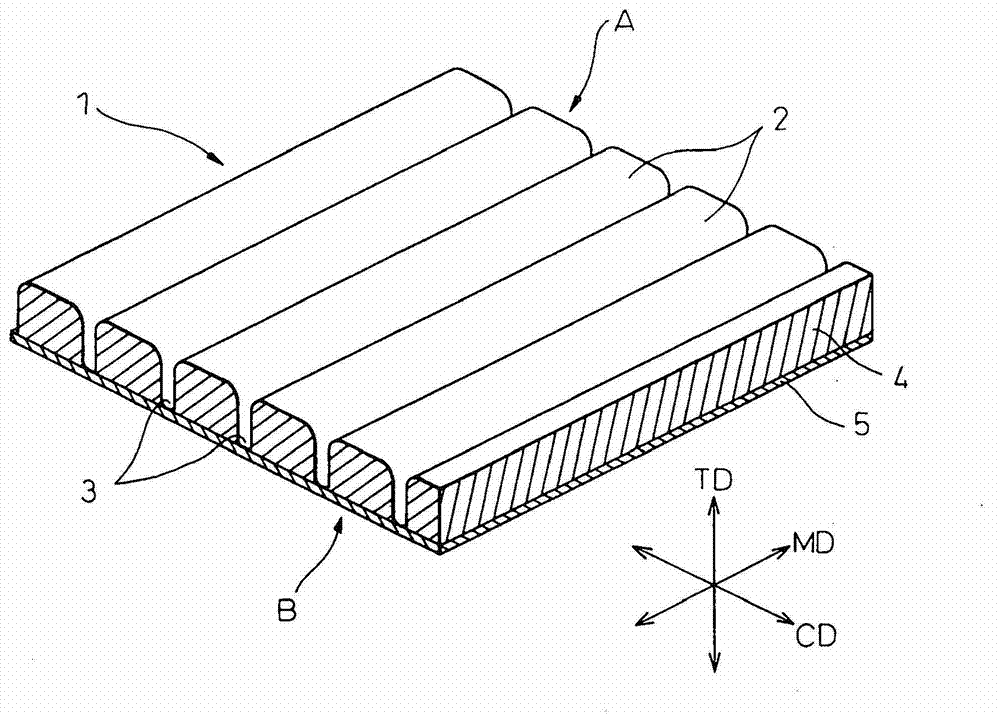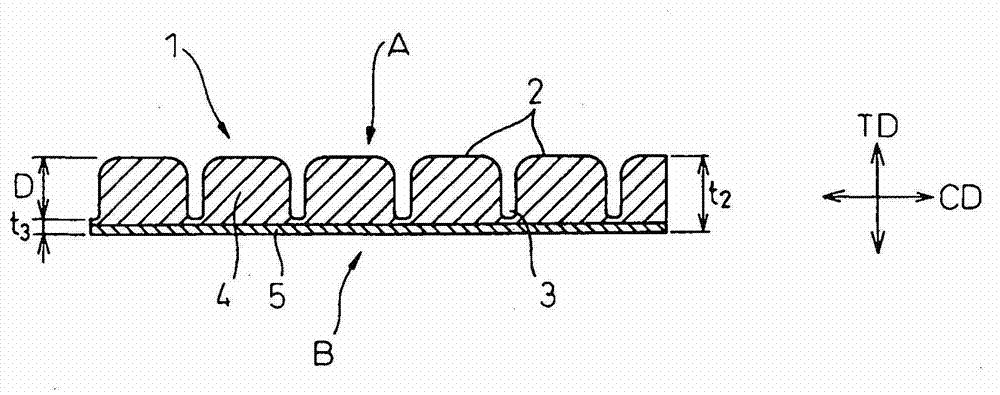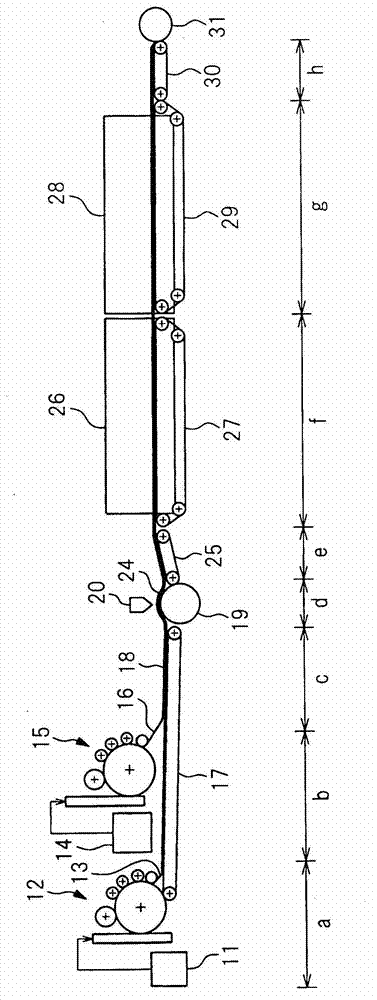Nonwoven-fabric sheet and process for producing same
A cloth sheet and thickness direction technology, which is applied in the field of non-woven sheet and its manufacturing, can solve the problem of reduced liquid permeability and achieve the effect of fast penetration
- Summary
- Abstract
- Description
- Claims
- Application Information
AI Technical Summary
Problems solved by technology
Method used
Image
Examples
Embodiment 1
[0095] use image 3 The production apparatus shown produces nonwoven sheets.
[0096] In step a, polypropylene / polyolefin polypropylene copolymer latent crimp side-by-side composite fibers (2.6 dtex, fiber length 51 mm, mass ratio = 50 / 50, area shrinkage rate 80% were used as fibers for the second layer) ) (In addition, the measurement method of the area shrinkage rate is described in the evaluation method column described later).
[0097] In step b, a polyester / polyethylene core-sheath composite fiber (thermal adhesive fiber, 2.6 dtex, fiber length 51 mm, core-sheath portion weight ratio=50 / 50) was used as the fiber for the first layer.
[0098] In process c, the mass per unit area of the first layer of web is 20g / m 2 , the mass per unit area of the second layer of web is 15g / m 2 .
[0099] In step d, a row of nozzles with a caliber of 1.0 mm and a pitch of 4 mm was used, air at about 125° C. was used as the sprayed fluid, and each nozzle was sprayed at a flow rate of...
Embodiment 2
[0107] The conveying speed in step f was changed to 9.5 m / min (that is, the ratio of the conveying speed in step f to the conveying speed in step e was changed to 0.95), and a nonwoven fabric sheet was produced in the same manner as in Example 1 otherwise.
PUM
| Property | Measurement | Unit |
|---|---|---|
| thickness | aaaaa | aaaaa |
| width | aaaaa | aaaaa |
| width | aaaaa | aaaaa |
Abstract
Description
Claims
Application Information
 Login to View More
Login to View More - R&D
- Intellectual Property
- Life Sciences
- Materials
- Tech Scout
- Unparalleled Data Quality
- Higher Quality Content
- 60% Fewer Hallucinations
Browse by: Latest US Patents, China's latest patents, Technical Efficacy Thesaurus, Application Domain, Technology Topic, Popular Technical Reports.
© 2025 PatSnap. All rights reserved.Legal|Privacy policy|Modern Slavery Act Transparency Statement|Sitemap|About US| Contact US: help@patsnap.com



